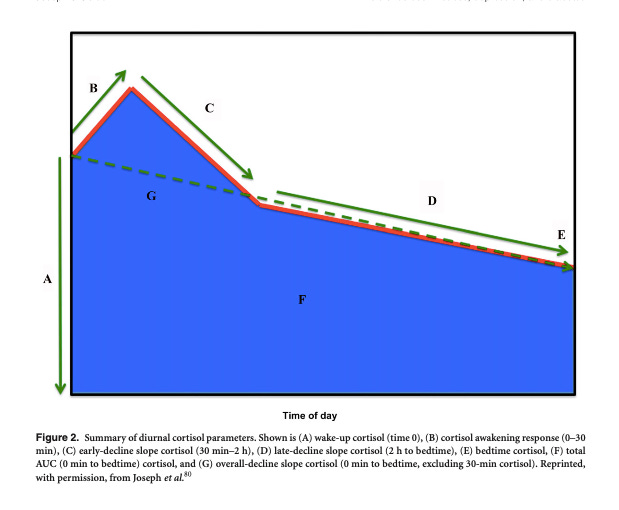Cortisol Part II: Optimal Rhythm
The awakening response, cortisol slopes, and how cortisol *should* look around the clock
Welcome to the second article in my new cortisol series. Last time, I shared the view that cortisol is a natural hormone the body needs. Cortisol increases in response to stress, but itself, is not bad. Today, I'll share with you the optimal daily cortisol rhythm. As you may remember, cortisol plays a big part in your circadian rhythm.
Optimal daily cortisol rhythm
Cortisol should peak in the morning around waking and the first activities of the day (see slope B in the below graphic). Then, across the day, cortisol should fall (decline) until reaching its daily low at bedtime (see slopes C and D in the below graphic). In the wee hours of the morning, cortisol should begin rising again until its peak around waking (labeled as A).

You are familiar with the urgency of waking up and needing to go pee first thing. This is cortisol, and in a gentler world, this feeling would …
Keep reading with a 7-day free trial
Subscribe to 🌞 Brighter Days, Darker Nights 🌚 to keep reading this post and get 7 days of free access to the full post archives.


